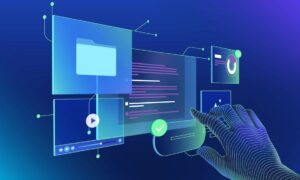As medical labs adapt to modern advancements, efficient sample management has become far more crucial than before. Leveraging intelligent technologies and trends in medical lab services evolved the sample handling processes. However, this change brought new challenges and introduced new procedures, requiring streamlining and better management without compromising the outcomes. This is where software for medical laboratories stood as the best solution for next-gen sample management without hampering rather than enhancing a lab’s service quality or compliance.
Read further to deeply understand the evolution of sample handling, common challenges that they introduced, and how next-generation Medical Laboratory Solutions addresses these roadblocks with its innovative features for error-free sample management.
Evolution Of Sample Management In Medical Labs
From visiting a medical lab for bloodwork or other pathology tests to booking a blood test at home, a lot has changed in healthcare diagnostics over the last decade. This transformation also observed more than one approach to sample collection, distribution, and management. As a result, labs require new workflow setups for the growing sample management trends while maintaining the same turnaround times and quality. Medical laboratory management software helps achieve this.
Types of New Age Sample Management & Their Challenges
Today, healthcare diagnostic transformation observes four types of sample management for basic laboratory testing.
- In-house Sample Process Management
In-house sample management involves collecting, acknowledging, processing, testing, and archiving sample specimens in the same laboratory setting. However, the process varies according to lab modalities or the type of testing. This is why, in modern LIMS, sample management processes are often streamlined using dedicated lab workflows. This helps labs maintain integrity.
Potential Challenges:
- Sample identification & mismatch
- Inaccuracy in sample preparation
- Complexities in workflows & modalities
- Variable turnaround time management and tracking
- Sample outsourcing
Outsourcing samples isn’t quite a new process. It involves collecting samples at one location and outsourcing them to another external lab setting for testing. The sample management in this process is quite decentralized and broken as there can be more than one outsourced center to manage, making it difficult for labs to keep track.
Potential Challenges
- Tracking across multiple locations is tough.
- Managing heavy volumes is difficult.
- Lack of financial control & trackin
- Remote Testing
Remote testing refers to collecting specimens at a location other than a lab setting or collection center. It can be carried out at home, in corporate offices, or in testing booths (for example, COVID-19 testing booths), forensic sites, etc. Depending on the volume size, these specimens can later be sent to a single lab location or outsourced to another location. The sample management in this process is quite decentralized and broken as there can be more than one outsourced center to manage, making it difficult for labs to keep track.
Potential Challenges
- Decentralized sample life cycle management
- No proper to & fro communication approach
- Increased navigation & tracking overheads
- Broken processes often lead to slow and delayed outcomes
- Kit-Based Testing
Kit-based Testing refers to specimen collection, and testing performed using a kit at any location convenient to the patient. The results generated from a testing kit are either shipped or communicated to a lab.
Potential Challenges
- Decentralized management
- No proper to & fro communication approach
- Increased navigation & tracking overheads
- Increased logistical costs
Standardization and compliance are the biggest challenges in all the old and new sample management trends. These hamper a lab’s efficiency and growth, not to mention the growing demand from patients for prompt services. All of these lead to labs losing their valuable customers and brand identity.
This is why Laboratory Sample Management Software become a necessity. Let’s understand how.
How LIS Software Solutions Caters To The Sample Management Change
A Laboratory information system (LIS software) leverages data to solve a medical lab’s major challenges. They are loaded with new-age features to ease the complex sample management process and meet the changing healthcare needs.
Purpose Of LIS Software
LIMS or any Lab Software maintains standardized and precise sample management in their daily laboratory practice through the following
1. Lab Workflows
The best lab information systems provide dedicated lab workflows for various types of lab modalities and sample management trends. This encourages a better approach to managing samples at various locations and stages while keeping the lab’s TAT in check.
2. Streamlined Processes
A medical lab management system is primarily designed to streamline all laboratory operational processes, including the sample life cycle. This enables staff to systematically carry out step-wise sample management processes with proper guidance and protocols.
3. Effective Sample Data Management
Effective sample data management is the key to improving the sample life cycle and tracking. By digitizing and leveraging sample data from collection to archival, the software helps maintain the integrity and standardization of all sample handling processes.
The best LIMS software serves its purpose by offering unmatched features to fix the core of lab operations. This is why you must evaluate the top 10 LIMS software features before finalizing the best solutions for your lab.
Top Features In LIS Software Solutions To Simplify Sample Management
The best-in-class sample-handling features that the LIS Software offers are as follows –
1. Digitization of Sample Data
Digitizing sample data, test details, and patient information in automated lab systems enables easy data storage, management, and transfer. Leveraging this data eases administrative staff to locate sample processes across multiple modalities/locations for effective monitoring and management. This also makes outsourcing and archival processes super easy with easy data linking and sharing.
2. Barcoding Samples
Sample labeling using unique barcodes enables easy identification of samples, preventing mismatch. This barcode holds valuable sample information mapped with patient, test, and sample data. Scanning through this barcode makes easy acknowledgment (accession) of samples across management stages, multiple locations, and outsourced centers.
3. In-Built Vacutainer Tube Guide & Instructions
Solutions for laboratory automation offer an inbuilt collection tube guide and instructions to prevent sample preparation mistakes (whether onsite or off-site). This enables phlebotomists to collect, prepare, and store samples using appropriate vacutainers and tube covers. The instructions also assist them in storing the samples in environmental conditions per standard practices and protocols, preventing damage and ensuring compliance.
4. Sample/Specimen Tracking
Leveraging digital sample data and automation makes identifying and tracking sample locations hassle-free. Labs can leverage Sample Tracking Software to evaluate daily volumes, monitor ongoing or outsourced operations, and track counts for different modalities to manage resources and workload effectively.
5. Dedicated Sample Workflows
Dedicated sample workflows are the best LIMS Software feature one must look for. These workflows automate the sample process in various verticals of lab testing, such as multi-stage sample management, RT-PCR plating, kiosk mode testing, home testing, kit-based testing, and many more.
Benefits Of Next-Gen Laboratory Sample Management Software
A next-gen laboratory sample management software provides a wide range of benefits for laboratory staff and patients, such as –
- Simplified & systematic, and hassle-free sample handling
- Eliminates chances of redraws, sample mismatch, or incorrect sample preparation
- Foster’s standardization and improves the quality of testing
- Complies with SOPs (standard operating procedures), ensuring quality control
Conclusion
As medical professionals, it is of utmost importance that labs follow new market trends and growing customer demands. A laboratory sample management system is the only powerful tool for adhering to and practicing the new-age diagnostic testing lifestyle. Meeting these requirements is the only mantra that will ensure the sustainable growth and scalability of diagnosis services today and in the future.



































